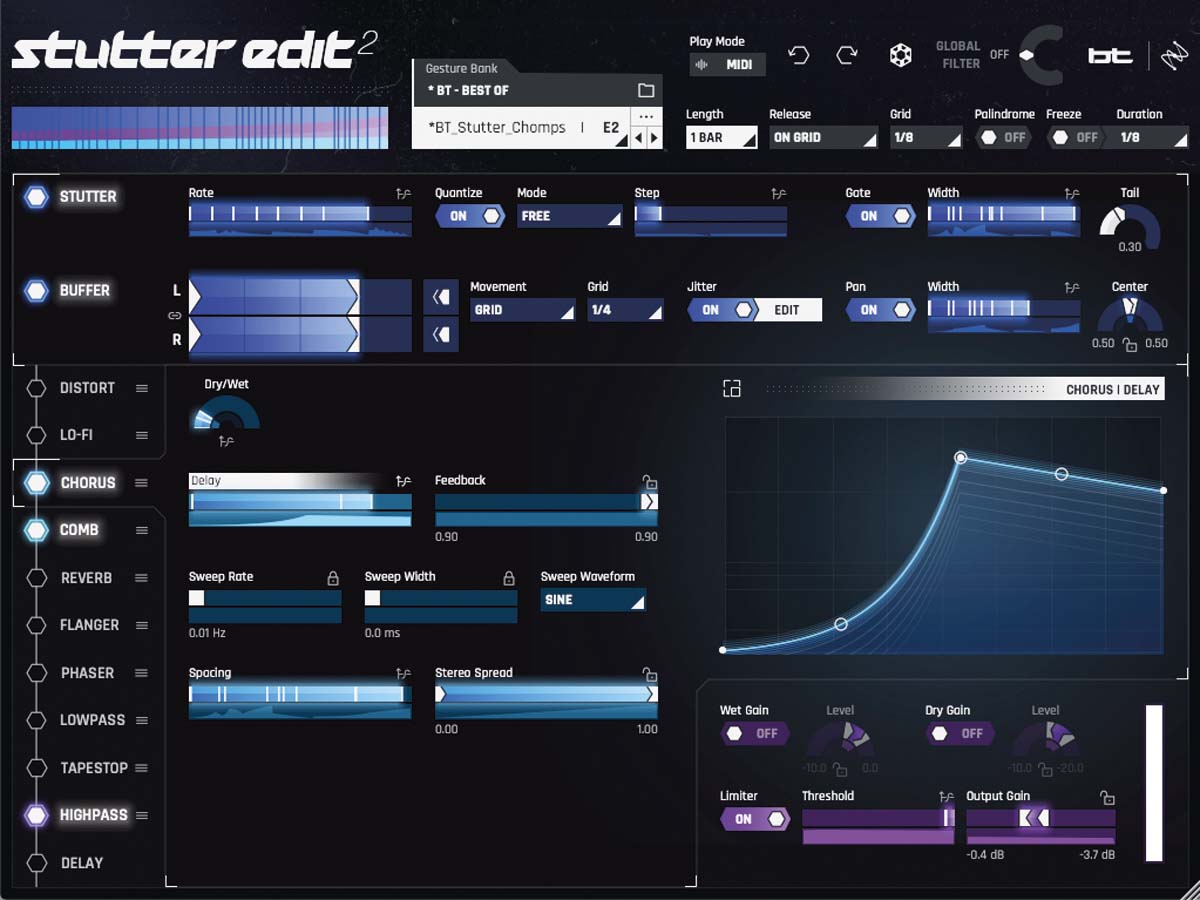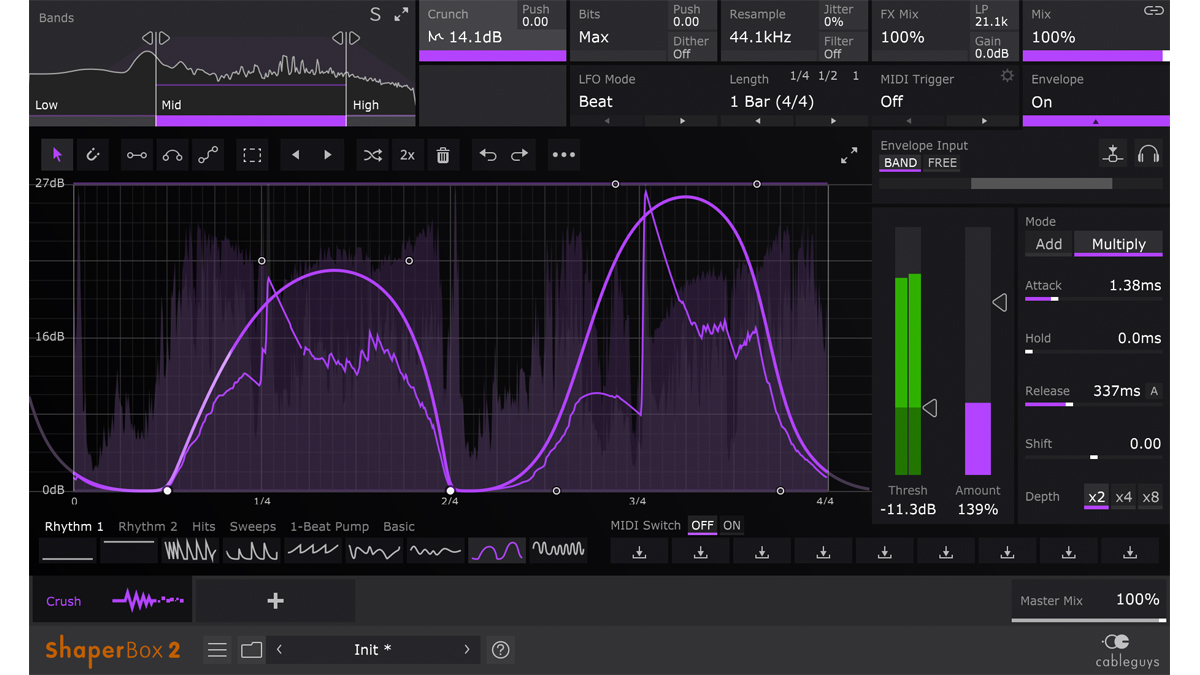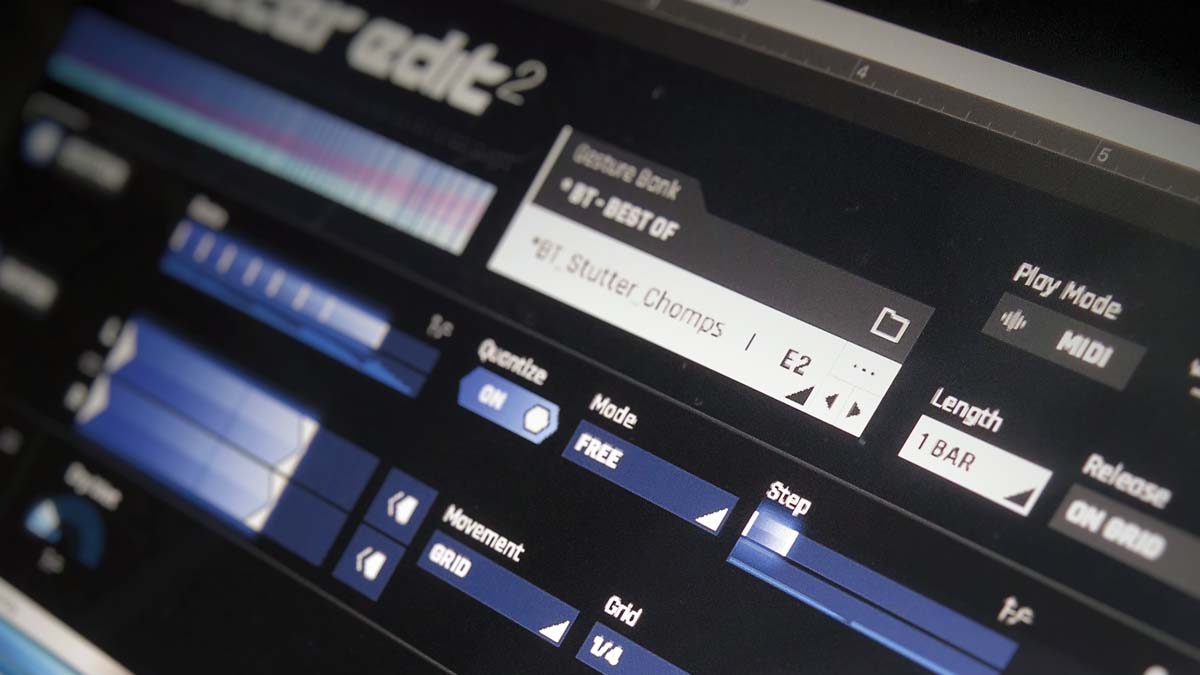MusicRadar Verdict
Stutter Edit faces more competition than it once did, but it remains a winning source of complex, glitchy multi-effects.
Pros
- +
Comb filter and reverb are both great additions.
- +
Auto mode makes auditioning/editing considerably easier.
- +
Tons of great presets.
Cons
- -
Creating your own Gestures can be time-consuming.
MusicRadar's got your back
What is it?
Released back in 2011, the original Stutter Edit saw iZotope team with US electronic music heavyweight BT to create a plugin that offered an easy route to capturing the producer’s distinctive, detailed, glitchy effects.
It wasn’t the first ‘glitch’ multi-effect plugin out there, and in the near decade since its launch many similar tools have appeared, but its popularity has endured thanks to an impressive balance between power and ease-of-use.
This long-awaited second version expands upon, rather than drastically changing the design of the original. As before, the core of Stutter Edit 2 lies in the Stutter and Buffer modules.
Between them, these control the parameters dictating how the effect captures and triggers incoming audio, with an assortment of tools for shaping the rhythm and timing of the effect. Results range from rigid, trap-like repeats to chaotic IDM glitches, and even audio-rate effects when cranked to max speed.
The comb filter and reverb are highlights, allowing for wonderfully weird pitched effects and spacial movement that pops in and out
Beyond these core stutter tools, the plugin offers a selection of effect modules to further mangle and modulate sounds. It’s here that Stutter Edit 2 gets its biggest overhaul – the original’s effect types have each been overhauled and a further four have been added, bringing reverb, chorus, comb filtering and a limiter into the mix.
Performance and verdict
These modules are powerful throughout, but the comb filter and reverb are highlights, allowing for wonderfully weird pitched effects and spacial movement that pops in and out.

Great for weird percussive lines and turning samples into warped textures. Throughout this effect section, iZotope have introduced a system of new ‘Time Variant Modifiers’. These are essentially customisable LFOs that can be applied to any effect parameter.
Its popularity has endured thanks to its balance between power and ease
Modulation is shaped using an expandable curve editor window, which lets users have full custom control of how effects progress over the course of an edit. It’s an excellent addition, which adds a considerable amount of extra depth to its sound design potential.
My only slight complaint is the lack of preset curve shapes, as found in similar tools like Cableguys ShaperBox. As before, overall processes within Stutter Edit are referred to as Gestures – each effectively a one-shot rhythmic effect preset.
These are stored in the library in banks, each laid out across an individual MIDI notes, the idea being that these can be live triggered using a controller or automated from a MIDI track.

• CableGuys CrushShaper
ShaperBox’s customisation tools make this a more powerful and nuanced take on the bitcrusher than any rival on the market right now.
• Illformed Glitch 2
A more like for like alternative, Glitch 2 is a big step forward for the former king of glitch plugins, although the loss of some of v1's functionality irks a little.
A smart addition for v2 is a new Auto mode, where gestures automatically loop without the need to be triggered. This really speeds up the process of auditioning and editing sounds.
At its most basic, Stutter Edit 2 can feel like something of a cheat button – load a Gesture and you instantly add complex, BT-style sound design, with none of the work. That’s not necessarily a bad thing: cinematic designers in particular will like the expanded crop of effects on offer.
For those who want to dig deeper, the additional effects and modulators make this a wonderfully creative if, at times, time-consuming, mangling tool. Other multi-effects can compete with or even outflank Stutter Edit – but it remains a deep, powerful well of sound design potential.
MusicRadar verdict: Stutter Edit faces more competition than it once did, but it remains a winning source of complex, glitchy multi-effects.
The web says
"That said, if you’re willing to be more thoughtful about your applications and are looking for a tool to help spice up your productions, you’ll find Stutter Edit’s sequel a sensational and flexible option for both glitches and simpler sidechains and gate patterns."
MusicTech
Hands-on demos
iZotope
Ave Mcree
Plugin Boutique
Specifications
- TYPE: Multi-FX plugin
- KEY FEATURES: 11 models (chorus, reverb, comb etc.) plus core stutter and buffer effects, MIDI triggering, Auto mode, curve editor
- SYSTEM REQUIREMENTS: Mac OS 10.13 to 10.15, PC: Windows 8 – Windows 10
- CONTACT: iZotope
I'm the Managing Editor of Music Technology at MusicRadar and former Editor-in-Chief of Future Music, Computer Music and Electronic Musician. I've been messing around with music tech in various forms for over two decades. I've also spent the last 10 years forgetting how to play guitar. Find me in the chillout room at raves complaining that it's past my bedtime.
“Excels at unique modulated timbres, atonal drones and microtonal sequences that reinvent themselves each time you dare to touch the synth”: Soma Laboratories Lyra-4 review
“I used everything I knew about music”: How Green Day exceeded expectations with their most ambitious song
YouTube just added AI tools that makes musicians, library music and video editors redundant










